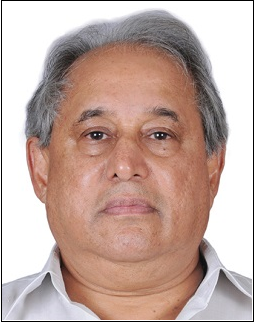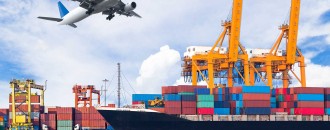
India’s seafood exports growing steadily, but some areas require attention
The target now is to reach $10 billion by 2020, and it is hoped that higher production will help the sector touch $6 billion in FY2014-15, despite dampened shrimp prices and a firm rupee.
 Abraham J. Tharakan, President, Seafood Exporters Association of India (SEAI)
Abraham J. Tharakan, President, Seafood Exporters Association of India (SEAI)Today, India’s seafood is popular all around the word with exports to around 100 countries. Growing from a mere Rs.3.92 crore in 1961-62 to Rs. 16,597.23 crore in 2011-12, the growth story of India’s seafood exports is amazing. Driving this growth is improved quality standards and the changing export matrix for India, which has changed from export of mostly dry fish/shrimps to neighbouring countries to exports of frozen shrimps to countries like Southeast Asia, USA and Japan. India today has amongst the best seafood processing facilities internationally, with more than 300 out of the 400 processing units having the European Union approval.
 Source - SEAI
Source - SEAIShrimps rule Let’s take a closer look at India’s seafood exports in FY2013-14. Capture fisheries from the nine coastal states contributed only $2.65 billion (about 53% of the total exports), while the remaining $2.35 billion came from export of Aquaculture Shrimp. It is clear that shrimps rule the roost. In FY2013-14, shrimp exports alone stood at around 300,000 tonnes (including both aquaculture and capture fisheries), worth around $3.2 billion, which was 64% of total exports worth around $5 billion in the year. The year also witnessed a record growth in unit value realization of frozen shrimp at 35%. Aquaculture shrimps have primarily contributed to the industry’s growth, accounting for around 47% of the total seafood exports. Andhra Pradesh alone accounts for about 27% of the total shrimp exports on account of its shrimp aquaculture production. However, this is not the full potential of Andhra Pradesh, and the state’s aquaculture exports alone has the potential to grow to over $3 billion before 2020. Export destinations for shrimps In terms of export destinations, India’s seafood exports is shipped to countries with high quality standards. In FY2013-14, USA was the largest market (95,927 tonnes) for frozen shrimp exports by India, followed by EU (73,487 tonnes), Southeast Asia (52,533 tonnes), and Japan (28,719 tonnes). The contribution of farmed shrimp to the total shrimp export was 73% in value terms. This means that only 27% shrimp exports were from capture fisheries. The main export of farmed shrimp was Vannamei species, which grew about 92% in tonnage and around 173% in value in FY2013-14 compared to the previous year. Fish exports Meanwhile, fish exports contributed $710 million in FY2013-14, which was 14% of total exports. Within India, Gujarat is the main exporter of fish, accounting for around $600 million or about 85% of India’s total fish exports. Cephalopods exports, which comprises squid, cuttlefish and octopus, contributed 10% of total exports with an export value of $510 million. Other varieties contributed 11% of the total exports with a value of $580 million. Challenges In India, over 14.5 million people depend on the fisheries sector for their livelihood, and an equal number of people engaged in ancillary activities in fisheries and aquaculture. However, India’s seafood industry is not without challenges. Looking at India’s resource potential from Aquaculture, Coastal fisheries and Deep Sea fishery resources, the immediate potential will be to focus on Aquaculture. But, other segments require attention as well. Our coastal fisheries are in rapid decline due to lack of a uniform fisheries and conservation policy by the nine coastal states. This decline is reaching alarming proportions, and unless some urgent and drastic action is taken, it is likely that the fishing communities will have to face a major economic hardship leading to social unrest and conflict among the States regarding fishing grounds. A proper conservation policy is required urgently to prevent this. Moreover, though we have one of the largest Exclusive Economic Zones (2.172 million sq. km.), we sadly have no Deep Sea Fishing Industry worthy of the name. Our Deep Sea Fishing policies have so far been inconsistent and not serving the national interest. In fact, no clear policy exists today. So the export contribution from our Deep Sea fishing is nothing worth mentioning. There are several inherent economic and social factors that resulted in the under-development of Indian Deep Sea fishing industry, and this area needs immediate attention from the Agriculture Ministry. It is a capital-intensive sector and most nations with vast coastlines, like India, encourage a Deep Sea fishing fleet, since in times of international conflict it provides a second line of coastline defence. Finally, to encourage production and exports, the aquaculture and fishing sectors should get the same benefits that is currently being extended to agriculture produce.
Mr. Abraham J. Tharakan is the President of Seafood Exporters Association of India (SEAI)





 to success.
to success.